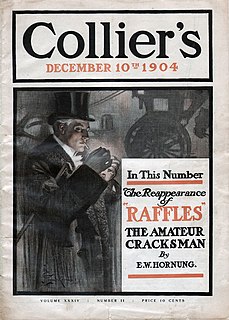
A. J. Raffles is a British fictional character – a cricketer and gentleman thief – created by E. W. Hornung, who, between 1898 and 1909, wrote a series of 26 short stories, two plays, and a novel about him and his fictional chronicler, Harry "Bunny" Manders.

Ernest William Hornung was an English author and poet known for writing the A. J. Raffles series of stories about a gentleman thief in late 19th-century London. Hornung was educated at Uppingham School; as a result of poor health he left the school in December 1883 to travel to Sydney, where he stayed for two years. He drew on his Australian experiences as a background when he began writing, initially short stories and later novels.

Raffles is a 1930 American pre-Code comedy-mystery film produced by Samuel Goldwyn. It stars Ronald Colman as the title character, a proper English gentleman who moonlights as a notorious jewel thief, and Kay Francis as his love interest. It is based on the play Raffles, the Amateur Cracksman (1906) by E. W. Hornung and Eugene Wiley Presbrey, which was in turn adapted from the 1899 short story collection of the same name by Hornung.
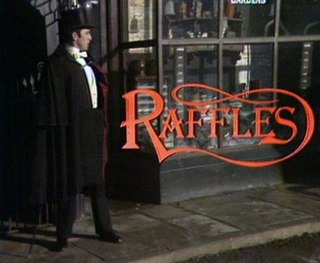
Raffles is a 1977 television series adapted from the A. J. Raffles stories by E. W. Hornung. The stories were adapted by Philip Mackie.
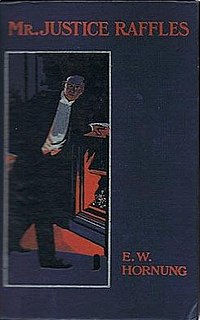
Mr. Justice Raffles is a 1909 novel written by E.W. Hornung. It featured his popular character A. J. Raffles a well-known cricketer and gentleman thief. It was the fourth and last in his four Raffles books which had begun with The Amateur Cracksman in 1899. The novel was published in the UK by Smith, Elder & Co., London, and in the US by Scribner's, New York.

Harry Manders is a fictional character in the popular series of Raffles stories by E. W. Hornung. He is the faithful companion of A. J. Raffles, a cricketer and gentleman thief, who makes a living robbing the rich in late Victorian British High Society.

The Black Mask is a 1901 short story collection by E. W. Hornung. It was published in the UK by Grant Richards, London, and in the US by Scribner's, New York under the title Raffles: Further Adventures of the Amateur Cracksman. It is the second collection of stories in Hornung's series concerning A. J. Raffles, a gentleman thief in late Victorian London.

The Amateur Cracksman is an 1899 short story collection by E. W. Hornung. It was published in the UK by Methuen & Co., London, and in the US by Scribner's, New York. Many later editions expand the title to Raffles: The Amateur Cracksman. Some editions such as Penguin Books, 1948, retitle the collection simply, Raffles.

"A Trap to Catch a Cracksman" is a short story by E. W. Hornung, and features the gentleman thief A. J. Raffles, and his companion and biographer, Bunny Manders. The story was published in July 1905 by Pall Mall Magazine in London. The story was also included as the seventh story in the collection A Thief in the Night, published by Chatto & Windus in London, and Charles Scribner's Sons in New York, both in 1905.

Raffles, the Amateur Cracksman (1925) is a feature length silent adventure crime drama/romance motion picture starring House Peters, Miss DuPont, Hedda Hopper, Fred Esmelton and Walter Long.
The Return of A. J. Raffles, first produced and published in 1975, is an Edwardian comedy play in three acts, written by Graham Greene and based somewhat loosely on E. W. Hornung's characters in The Amateur Cracksman. Set in the late summer of the year 1900, the story revolves around the infamous burglar and cricketer, A. J. Raffles—presumed dead in the Boer War—who returns to Albany where, with his friends Bunny and Lord Alfred Douglas, he plots to rob the Marquess of Queensberry, partly for the money and partly for revenge against the Marquess for his treatment of their friend Oscar Wilde. The robbery takes place at the Marquess' house in Hertfordshire, where Raffles and Bunny are interrupted by the Prince of Wales and a Scotland Yard detective, who discover the Prince's personal letters have also been stolen.
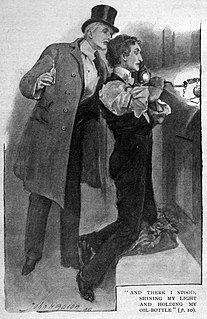
Arthur J. Raffles is a fictional character created in 1898 by E. W. Hornung, brother-in-law to Sir Arthur Conan Doyle, the creator of Sherlock Holmes. Raffles is, in many ways, an inversion of Holmes – he is a "gentleman thief", living at the Albany, a prestigious address in London, playing cricket as a gentleman for the Gentlemen of England and supporting himself by carrying out ingenious burglaries. He is called the "Amateur Cracksman" and often, at first, differentiates between him and the "professors" – professional criminals from the lower classes.
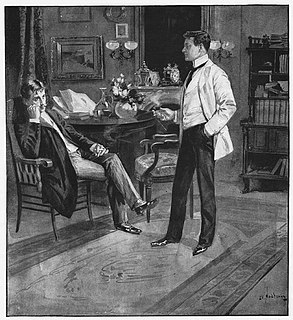
"The Ides of March" is a short story by E. W. Hornung, and the first appearance of the gentleman thief A. J. Raffles, and his companion and biographer, Bunny Manders. The story was first published in June 1898 by Cassell's Magazine. The story was also included in the collection The Amateur Cracksman, published by Methuen & Co. Ltd in London, and Charles Scribner's Sons in New York, both in 1899.

"A Costume Piece" is a short story by E. W. Hornung, and features the gentleman thief A. J. Raffles, and his companion and biographer, Bunny Manders. The story was first published in July 1898 by Cassell's Magazine. The story was also included in the collection The Amateur Cracksman, published by Methuen & Co. Ltd in London, and Charles Scribner's Sons in New York, both in 1899.
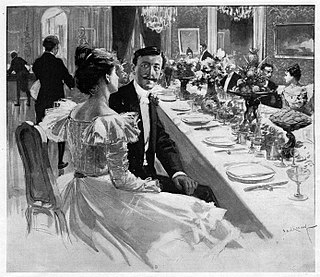
"Gentlemen and Players" is a short story by E. W. Hornung, and features the gentleman thief A. J. Raffles, and his companion and biographer, Bunny Manders. The story was first published in August 1898 by Cassell's Magazine. The story was also included in the collection The Amateur Cracksman, published by Methuen & Co. Ltd in London, and Charles Scribner's Sons in New York, both in 1899.
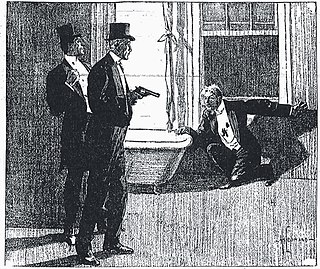
"Wilful Murder" is a short story by E. W. Hornung, and features the gentleman thief A. J. Raffles, and his companion and biographer, Bunny Manders. The story was first published as the fifth part of the collection The Amateur Cracksman, published by Methuen & Co. Ltd in London, and Charles Scribner's Sons in New York, both in 1899. This and "Le Premier Pas" were the two stories in the collection not published previously in magazine format.

"Nine Points of the Law" is a short story by E. W. Hornung, and features the gentleman thief A. J. Raffles, and his companion and biographer, Bunny Manders. The story was first published in September 1898 by Cassell's Magazine. The story was also included as the six story in the collection The Amateur Cracksman, published by Methuen & Co. Ltd in London, and Charles Scribner's Sons in New York, both in 1899.

"The Return Match" is a short story by E. W. Hornung, and features the gentleman thief A. J. Raffles, and his companion and biographer, Bunny Manders. The story was first published in October 1898 by Cassell's Magazine. The story was also included as the seventh story in the collection The Amateur Cracksman, published by Methuen & Co. Ltd in London, and Charles Scribner's Sons in New York, both in 1899.
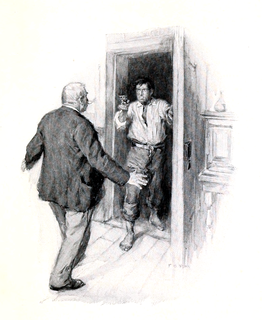
"The Fate of Faustina" is a short story by E. W. Hornung, and features the gentleman thief A. J. Raffles, and his companion and biographer, Bunny Manders. The story was first published in Scribner's Magazine in March 1901. The story was also included as the third story in the collection The Black Mask, published by Grant Richards in London, and Charles Scribner's Sons in New York, both in 1901.
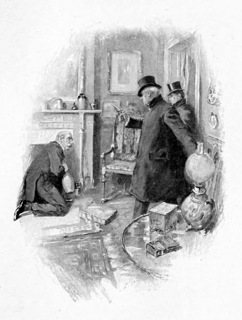
"To Catch a Thief" is a short story by E. W. Hornung, and features the gentleman thief A. J. Raffles, and his companion and biographer, Bunny Manders. The story was first published in Scribner's Magazine in May 1901. The story was also included as the fifth story in the collection The Black Mask, published by Grant Richards in London, and Charles Scribner's Sons in New York, both in 1901.



















